May 28, 2025 by
The product management lifecycle is typically visualised as a loop of activities that take place in broad areas of Discovery and Delivery.
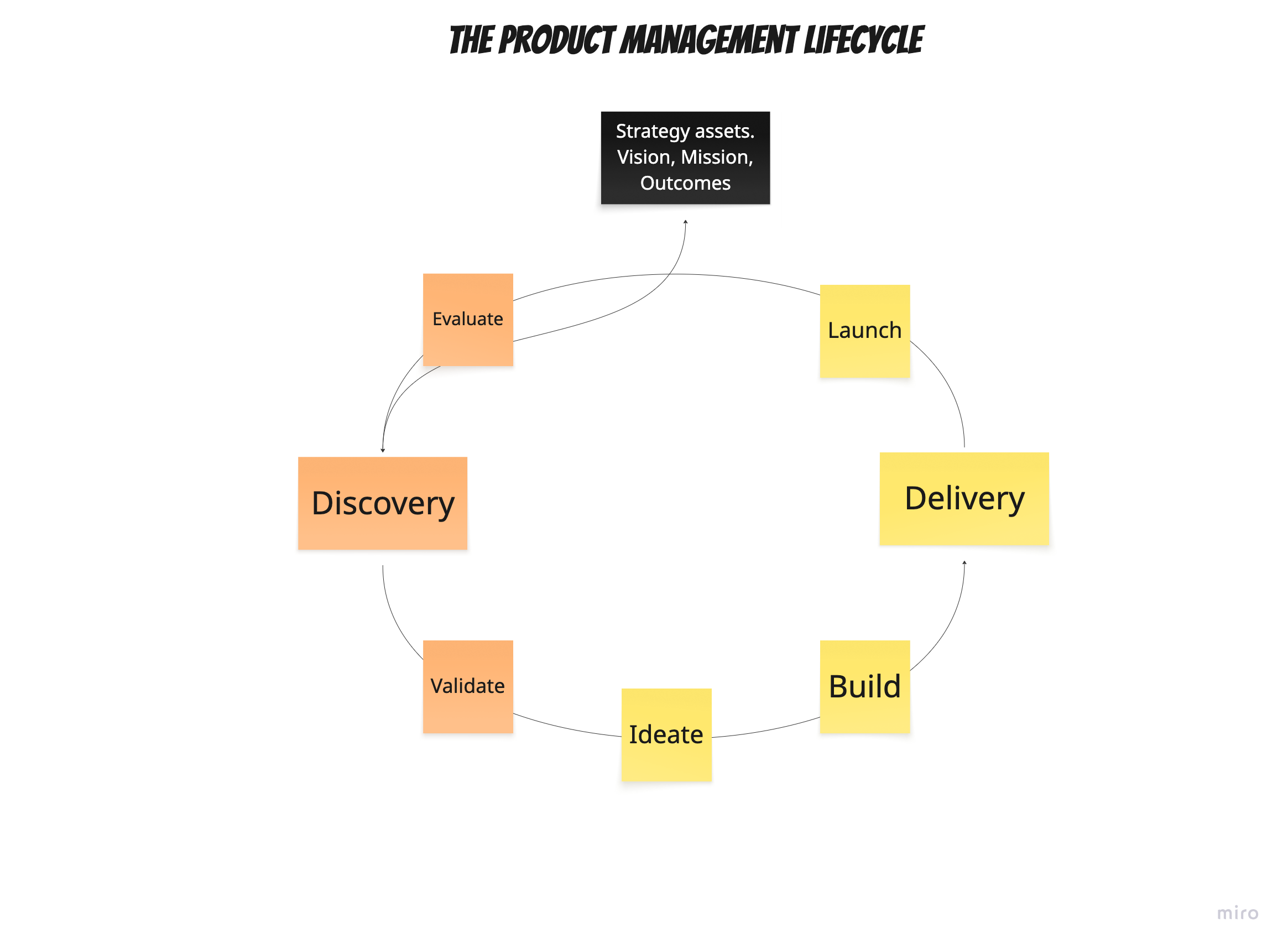
Strategy informs the direction and out of that you might create artefacts like Vision, Mission and Outcomes for the team to impact.
Types of activity involved in product lifecycle management
A product outcome informs the scope of discovery and delivery and then a further range of artefacts might be used to support the Discovery (figuring out what to build) and Delivery (building and measuring).
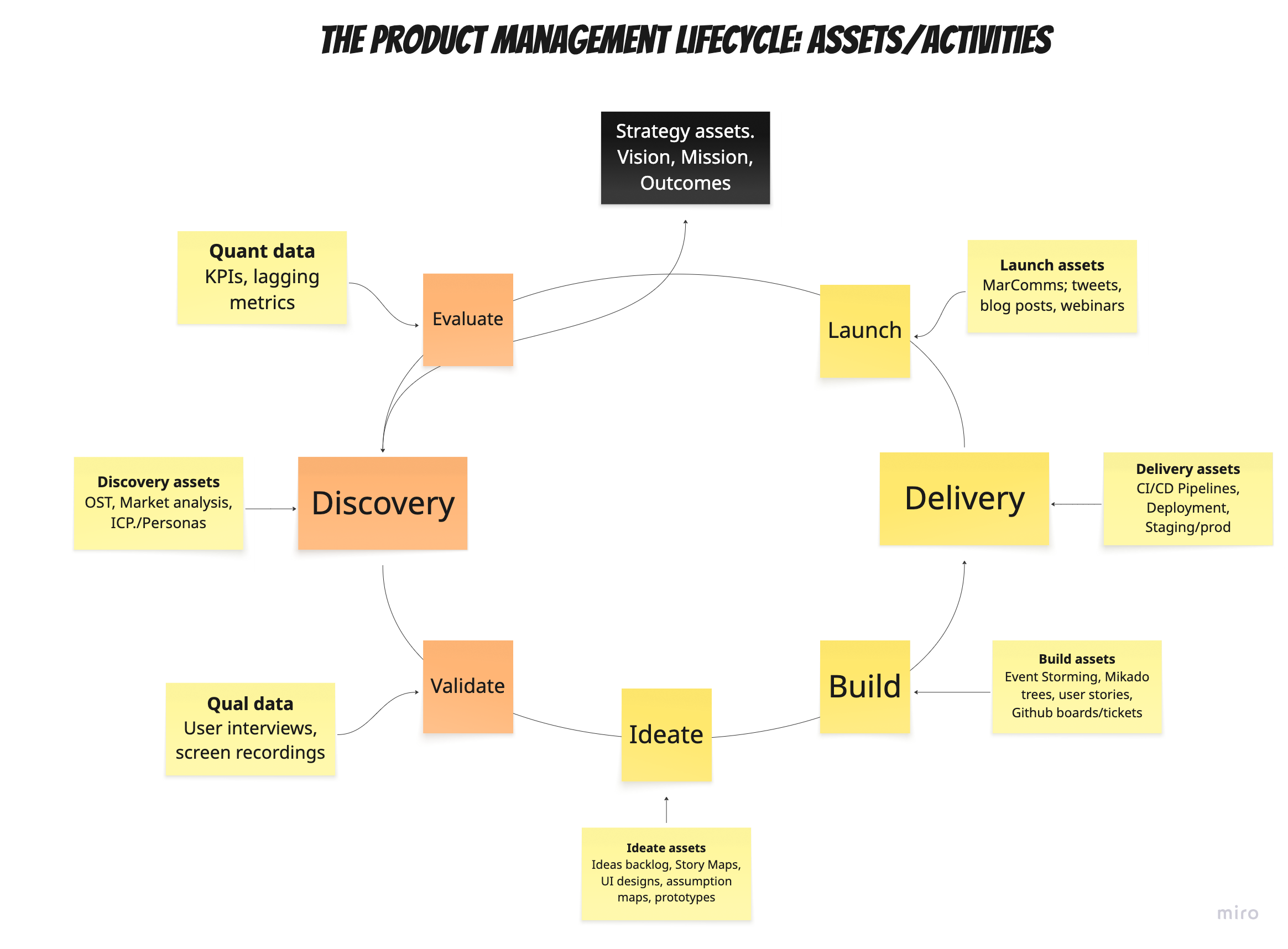
Typical roles involved in product lifecycle management
When working in a cross-functional team, the Product Management tole is to co-ordinate these activities towards achieving the outcomes. Various other roles support the product function including the engineering team, data science, design and marketing.
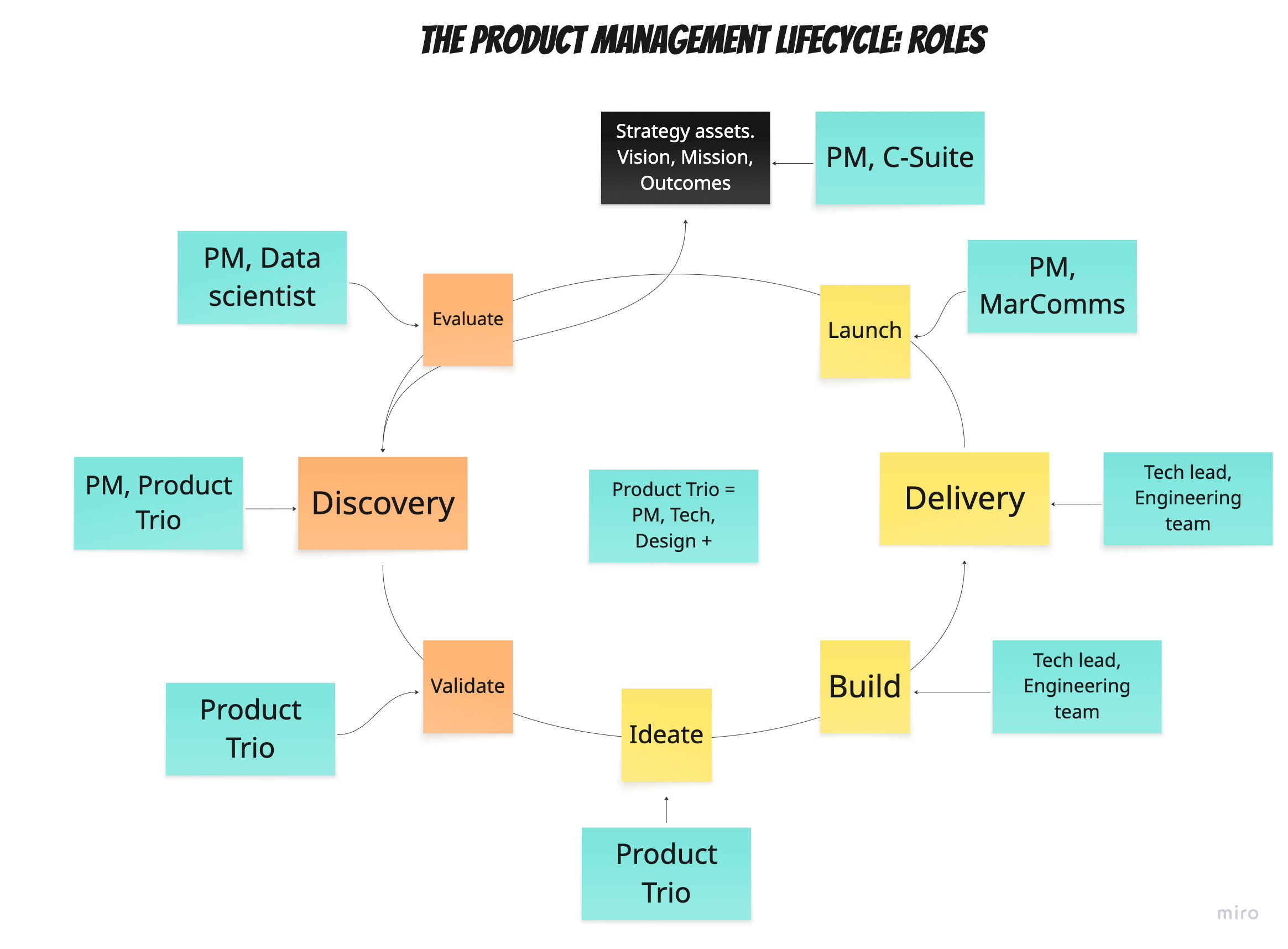
Roles can sometimes be blurred and often as a PM you need to have an understanding of how these roles support the process so you can identify and unblock the bottlenecks Often, I’ve found I’ve needed to get stuck in helping develop marketing materials, do a bit of pair programming and co-create data/analytics queries which helps my understanding of how other people work, whilst at the same team flexing muscles in different job domains.
The beautiful mess of product lifecycle management
In practice, the product management delivery lifecycle is messy!
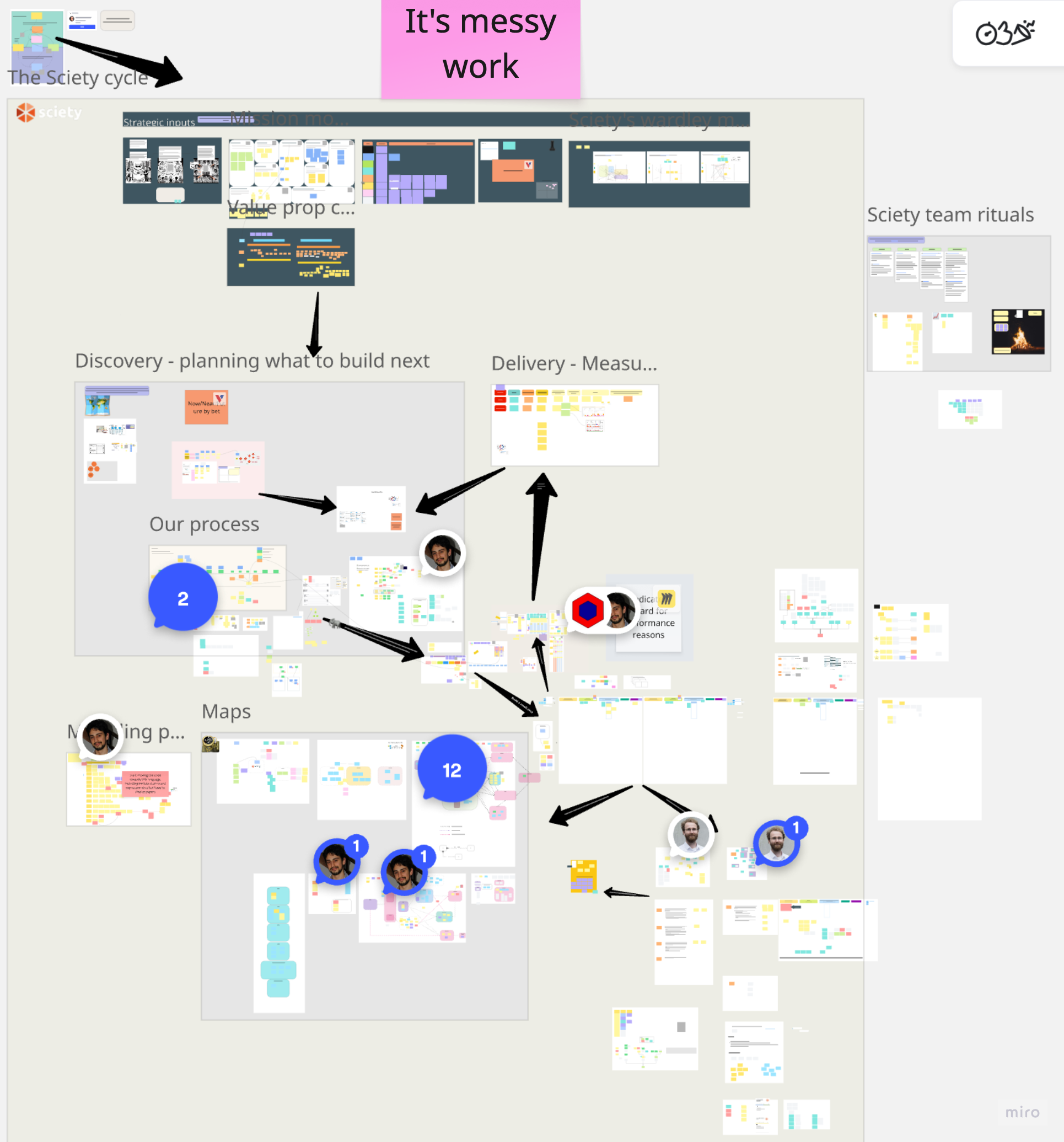
This is a high level view of the Sciety board. Working on one Miro board, can be messy, but the large black arrows you see pretty much convey the lifecycle.
If you’d like a deep dive, I recorded an overview:
🎥 Watch the KPI Map Roadmap recording
The videos cover how to move through the Discovery and Delivery process, always mapping back to outcomes.
A practical example of product lifecycle management
In practice, at Sciety here’s how I’d map a recent example of work to the lifecycle
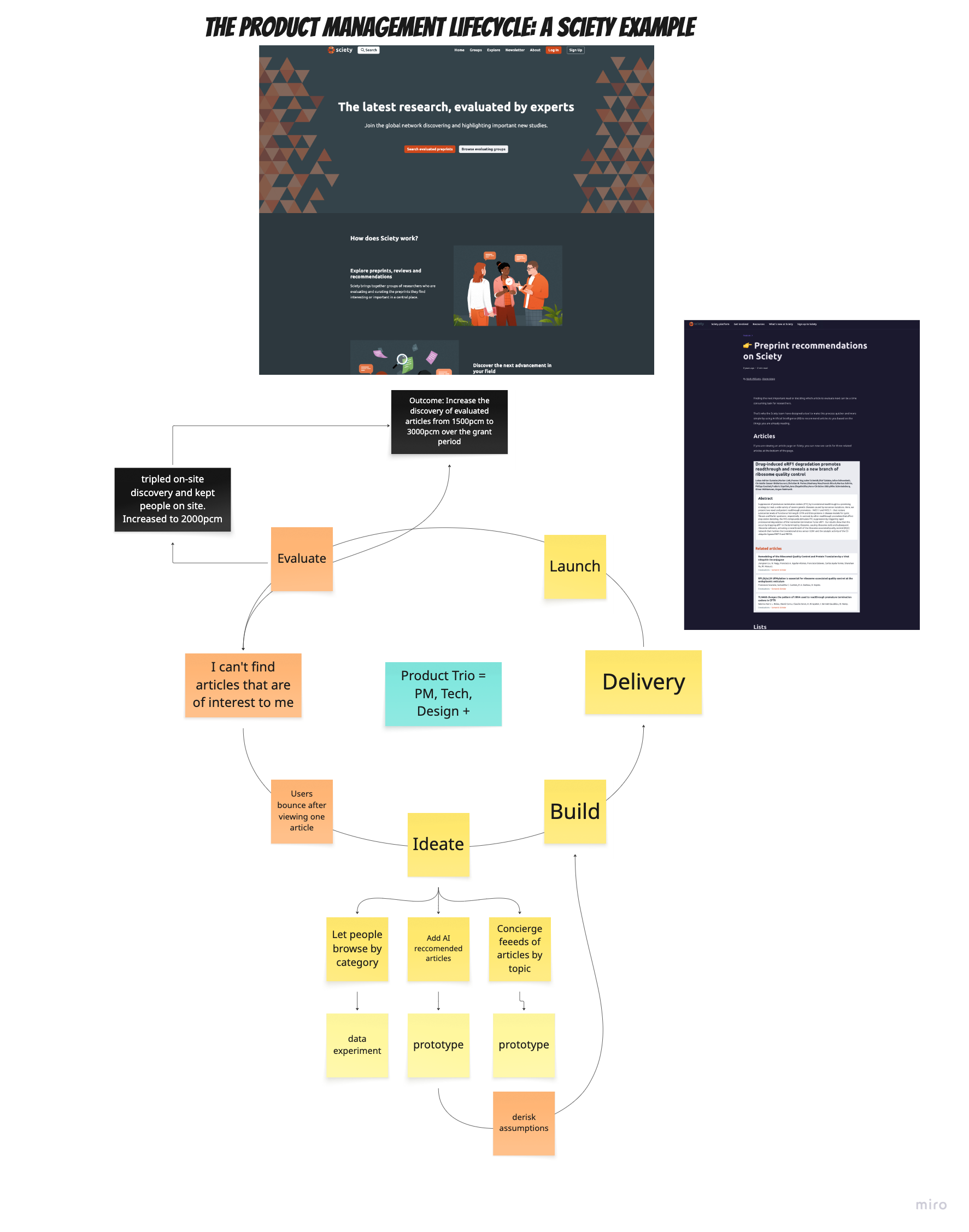
I set an outcome with the management team of “Increase the discovery of evaluated articles from 1500pcm to 3000pcm over the grant period”
One o the opportunities we uncovered as a product trio was “I can’t find articles that are of interest to me” and I confirmed that this had the impact of users jumping off after reading the article they had landed on.
The team considered lot sof ideas and decided to test out
- Let people browse by category
- Add AI recommended articles
- Concierge feeds of articles by topic
To validate these, you are looking to increase confidence in the idea and or derisk it if it presents risk to the business. We did this through a combination of looking back at historic data and creating working software prototypes.
By deploying a working example for our “add AI recommended articles”, we were able to see a positive signal of people interacting with the related articles. This increased our confidence and the team deployed the solution.
I gave this a 3 month time for evaluation, given that our long term goal for our funder had a 3 year window. In that time I saw that we tripled on-site discovery and kept people on site. Our discovery of evaluated articles increased to 2000pcm.
Alongside other product experiments, the team were able to exceed the goal set increasing readership of preprints via the platform by 100%, increasing the use of curated lists as signals of trust in the research by 150%.